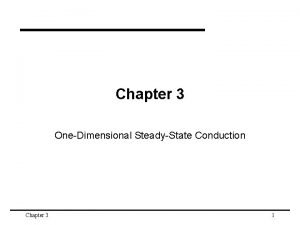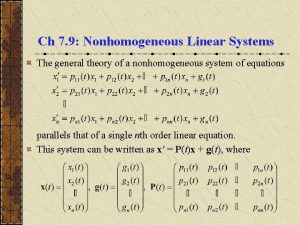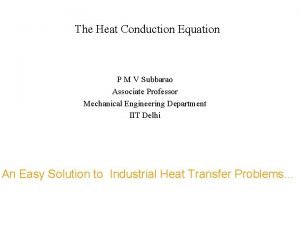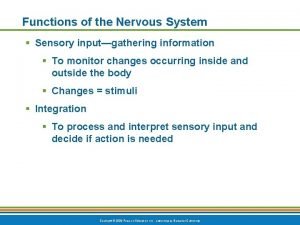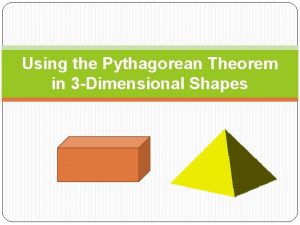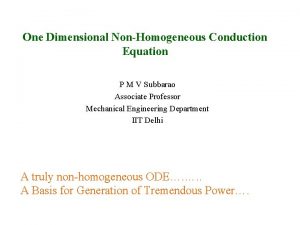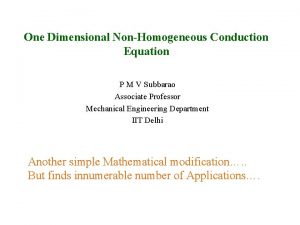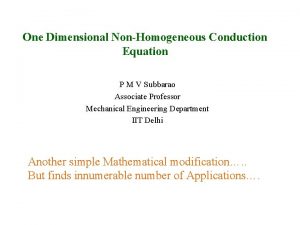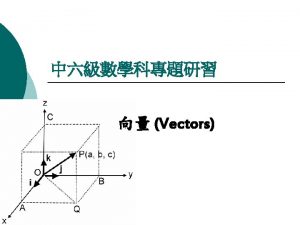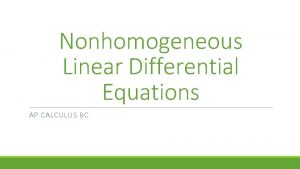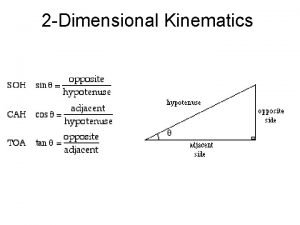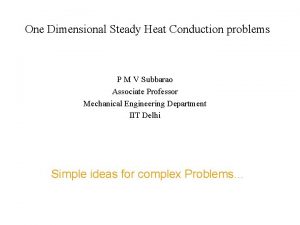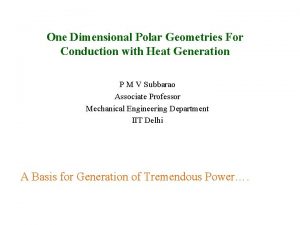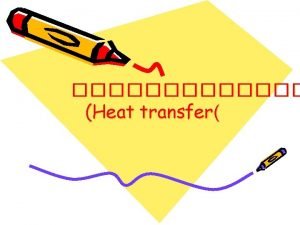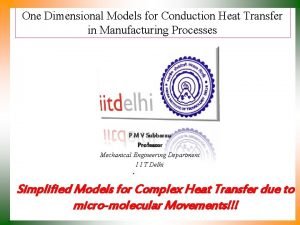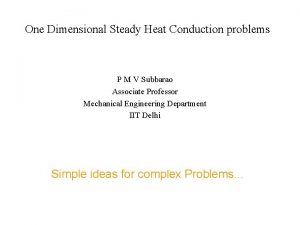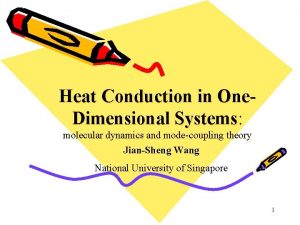One Dimensional NonHomogeneous Conduction Equation P M V

















- Slides: 17

One Dimensional Non-Homogeneous Conduction Equation P M V Subbarao Associate Professor Mechanical Engineering Department IIT Delhi Another simple Mathematical modification…. . But finds innumerable number of Applications….

Homogeneous ODE • How to obtain a non-homogeneous ODE for one dimensional Steady State Heat Conduction problems? • Blending of Convection or radiation effects into Conduction model. • Generation of Thermal Energy in a solid body. • GARDNER-MURRAY Ideas.

Nature know More Mathematics !!!

Amalgamation of Conduction and Convection Heat Convection In/out Heat Conduciton in Heat Conduciton out

Innovative Fin Designs

Single Fins : Shapes Longitudinal Radial Pins

profile PROFILE AREA cross-section CROSS-SECTION AREA

Anatomy of A LONGITUDINAL FIN Dx thickness x

Heat Transfer from Extended Surfaces • Involves conduction through a solid medium as well as convection and/or radiation energy transfer • Goal is to enhance heat transfer between a solid and a fluid. • Possibilities: • increase heat transfer coefficient • increase surface temperature • decrease fluid temperature • increase surface area • The most common way to enhance heat transfer is by increasing the surface area for convection via an extension from a solid medium: fins

GARDNER-MURRAY ANALYSIS ASSUMPTIONS 1. Steady state one dimensional conduction Model. 2. No Heat sources or sinks within the fin. 3. Thermal conductivity constant and uniform in all directions. 4. Heat transfer coefficient constant and uniform over fin faces. 5. Surrounding temperature constant and uniform. 6. Base temperature constant and uniform over fin base. 7. Fin width much smaller than fin height. 8. No heat flow from fin tip. 9. No bond resistance between fin base and prime surface. 10. Heat flow off fin proportional to temperature excess.

Slender Fins Dx thickness x

Steady One-dimensional Conduction through Fins Qconv Qx Conservation of Energy: Where Qx+dx

Substituting and dividing by Dx: Taking limit Dx tends to zero and using the definition of derivative: Substitute Fourier’s Law of Conduction:

For a constant cross section area:

Define: At the base of the fin:

Tip of A Fin

 Non homogeneous differential equation definition
Non homogeneous differential equation definition One dimensional steady state conduction
One dimensional steady state conduction A circular motion is one dimensional
A circular motion is one dimensional Nonhomogeneous linear system
Nonhomogeneous linear system Rconv
Rconv How is one-way conduction at synapses ensured
How is one-way conduction at synapses ensured One empire one god one emperor
One empire one god one emperor One one one little dogs run
One one one little dogs run One king one law one faith
One king one law one faith One god one empire one emperor
One god one empire one emperor One ford
One ford See one do one teach one
See one do one teach one One price policy
One price policy Twelfth night speeches
Twelfth night speeches Studiendekanat uni bonn
Studiendekanat uni bonn One vision one identity one community
One vision one identity one community Graphic organizer with the aims of la liga filipina
Graphic organizer with the aims of la liga filipina Pythagorean theorem in three dimensions
Pythagorean theorem in three dimensions

